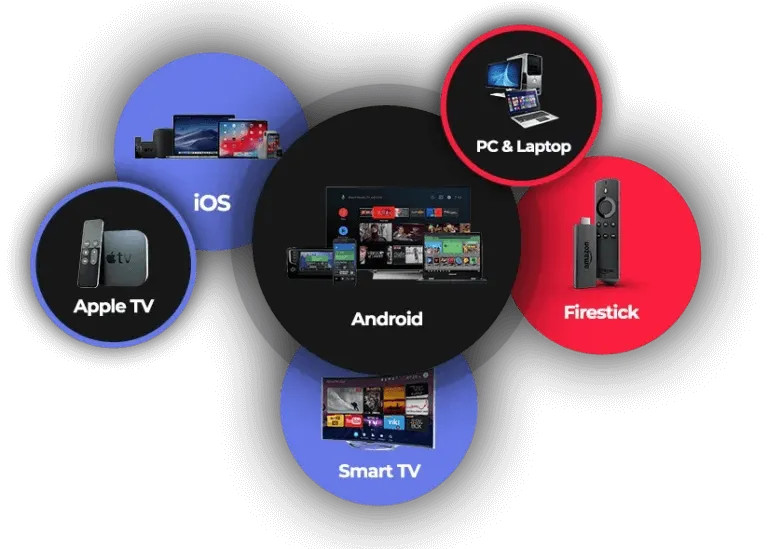Upgrade Your Entertainment: Economical IPTV Subscription Plans
Upgrade Your Entertainment: Economical IPTV Subscription Plans
Blog Article
Just How IPTV Functions: A Step-by-Step Overview to Web Procedure Television Technology
Web Method Tv (IPTV) has actually revolutionized the method we take in television web content, providing a new realm of possibilities through the power of the internet. From the basic principles of IPTV to the complex procedure of web content delivery, each step plays a crucial function in ensuring a seamless viewing experience.
IPTV Essentials
In recognizing IPTV essentials, it is crucial to grasp the essential operations of this technology in delivering tv web content online. IPTV, which means Net Protocol Television, utilizes Net Method (IP) networks to send tv content to customers' tools. Unlike typical approaches of relaying tv web content via wire or satellite signals, IPTV streams media with high-speed web connections.

Furthermore, IPTV allows for interactive capacities, such as video clip as needed (VOD) and digital program overviews (EPG), enhancing the individual experience by giving even more control and adaptability in accessing web content. Overall, understanding the essentials of IPTV establishes the foundation for exploring its advanced performances and the benefits it uses to contemporary television intake.
Web Content Shipment Process
Reliable content distribution in IPTV systems includes a well-structured process that makes sure seamless transmission of tv content over IP networks. The web content shipment process in IPTV starts with the creation of the video clip content, which is after that inscribed right into digital style appropriate for IP transmission. This encoded material is after that securely saved on web servers referred to as media web servers. When a visitor demands particular material, the IPTV system fetches the asked for data from the media web servers and delivers it to the visitor's device over the web.

Middleware Performance
With the combination of middleware, IPTV systems gain boosted capability that streamlines individual communication and web content monitoring. One of the essential features of middleware in IPTV is to allow personalized customer experiences by offering attributes such as interactive program guides, video-on-demand solutions, interactive advertising, and customer choices management.

Tool Compatibility
Given the pivotal role of middleware in making it possible for seamless interaction and content management in IPTV systems, a vital element to take into consideration is the compatibility of gadgets used for accessing the IPTV solutions. Tool compatibility is vital for making sure a smooth individual experience and ideal efficiency when accessing IPTV material.
In the context of IPTV, pop over to these guys device compatibility refers to the ability of a tool to properly engage with the IPTV solution, present material properly, and support the necessary methods and codecs for streaming video clip web content over the internet. Various gadgets, such as smart Televisions, set-top boxes, smart devices, tablet computers, and computer systems, might have differing degrees of compatibility with IPTV solutions.
To make sure a seamless watching experience, it is very important for individuals to choose tools that work with the specific IPTV solution they are making use of. Furthermore, IPTV service providers must offer support for a large range of tools to deal with the diverse requirements of their individual base. By prioritizing device compatibility, both users and provider can enhance the overall IPTV experience.
Top Quality of Solution (QoS)
Thinking about the important role of maintaining a high standard of efficiency and dependability in IPTV systems, making certain regular Quality of Solution (QoS) remains an essential Check Out Your URL element of the individual experience. QoS in IPTV describes the ability of the system to supply content with marginal disruptions, high resolution, and quick loading times. To achieve optimal QoS, numerous factors require to be resolved. Network bandwidth is critical to sustain high-quality video clip streaming without buffering or pixelation. Furthermore, latency, jitter, and package loss have to be reduced to boost the watching experience.
Solution carriers employ QoS mechanisms such as website traffic prioritization, buffering, and error modification to preserve a secure IPTV service. By prioritizing IPTV website traffic over much less time-sensitive data, providers can ensure smooth playback also during height use hours. Buffering helps compensate for network changes, while mistake improvement techniques boost information stability.
Continuous surveillance and optimization of QoS criteria are necessary to adapt to changing network conditions and user needs. Ultimately, a durable QoS framework is important for providing a smooth and enjoyable IPTV experience to customers.
Final Thought
To conclude, IPTV runs through the transmission of tv material over internet method networks. The innovation includes a methodical procedure of material distribution, facilitated by middleware capability to make sure compatibility across numerous devices. Top quality of Service plays an essential duty in preserving the performance and integrity of IPTV services. Comprehending the fundamental concepts of IPTV is essential for realizing the complexities of this cutting-edge tv technology.
Report this page